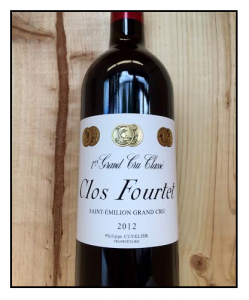Clos Fourtet, Saint-Emilion Grand Cru 2012 750ML ($149.95) Buy Now: $119
If you’ve driven to the town of St. Emilion you’ve probably seen Château Clos Fourtet, its rose bush-ended vineyard rows, and the classic château itself. Built in 1790, the stone manor sits atop one of Bordeaux’s best limestone-hewn cellars. And ever since Philippe Cuvelier purchased Clos Fourtet in 2001, the wines laid down in that cellar have only been better: the 2009 Clos Fourtet garnered 100 points from Robert Parker. Few vintages deliver like 2009, but 2012 was kindest to Merlot, which constitutes 86% of this Premier Grand Cru Classé (the rest being 10% Cab Sauvignon, 4% Cab Franc): a decidedly Right Bank year. Praised by critics from the USA, France, and the UK, the 2012 Clos Fourtet is drinking well now, but has a long life ahead still. Collectors take note: Just as the château cannot be missed when approaching St. Emilion, the 2012 Clos Fourtet should not be overlooked either. – Daniel
Wine Spectator 94 points — #9 2015 TOP 100–“Gorgeous, with a pure, unadorned violet aroma giving way to very ripe and stylish plum, boysenberry and blackberry fruit. Offers a suave mouthfeel, with anise and tobacco hints filling the background. A finely stitched chalk note extends the finish. Not shy on depth, and sneakily long.”
Robert Parker 95 points “Having just had the 2003 and 2005 from my cellar, I can attest to the magnificent turnaround in quality this famous estate on the eastern side of St.-Emilion has achieved. All of it is attributable to its dynamic proprietor, Philippe Cuvelier. The 2012 Clos Fourtet (usually 85% Merlot and 15% Cabernet Franc) has beautiful blackberry and blueberry fruit and an inky purple color. With flawless integration of acidity, tannin, wood and alcohol, a full-bodied mouthfeel and stunning richness, this is impressive and certainly one of the vintage’s top wines. It should evolve beautifully for 15-20 years, and be drinkable in 3-4. Yields were a modest 32 hectoliters per hectare with the alcohol at 14%.” RP

